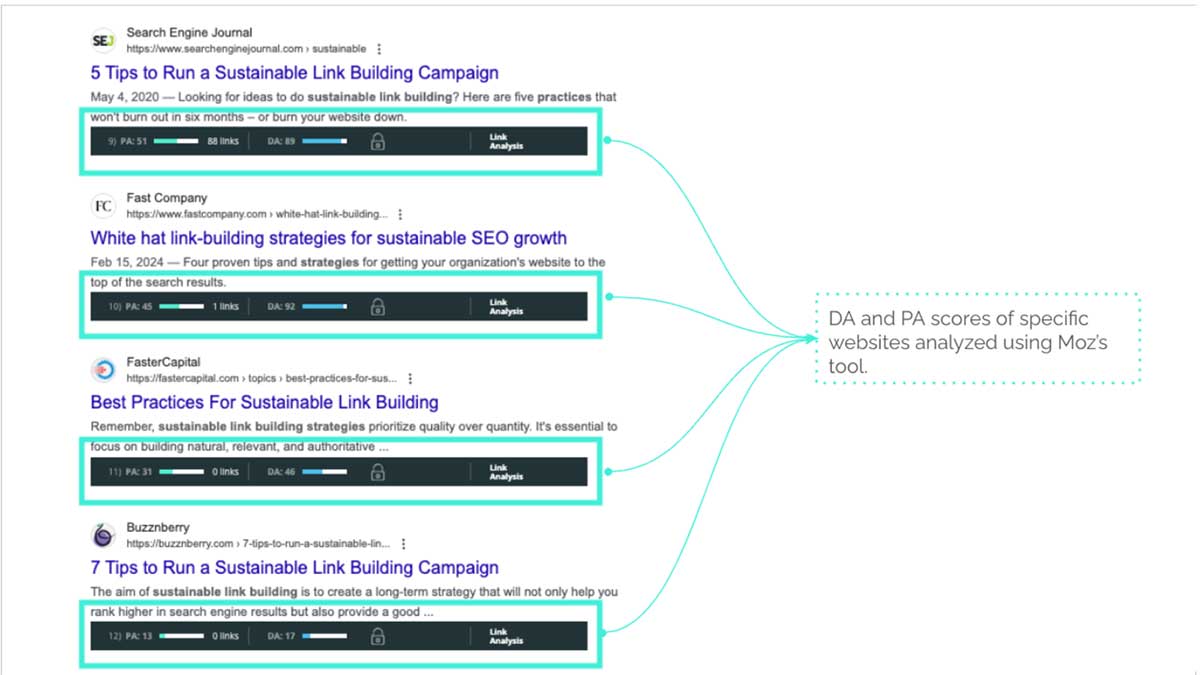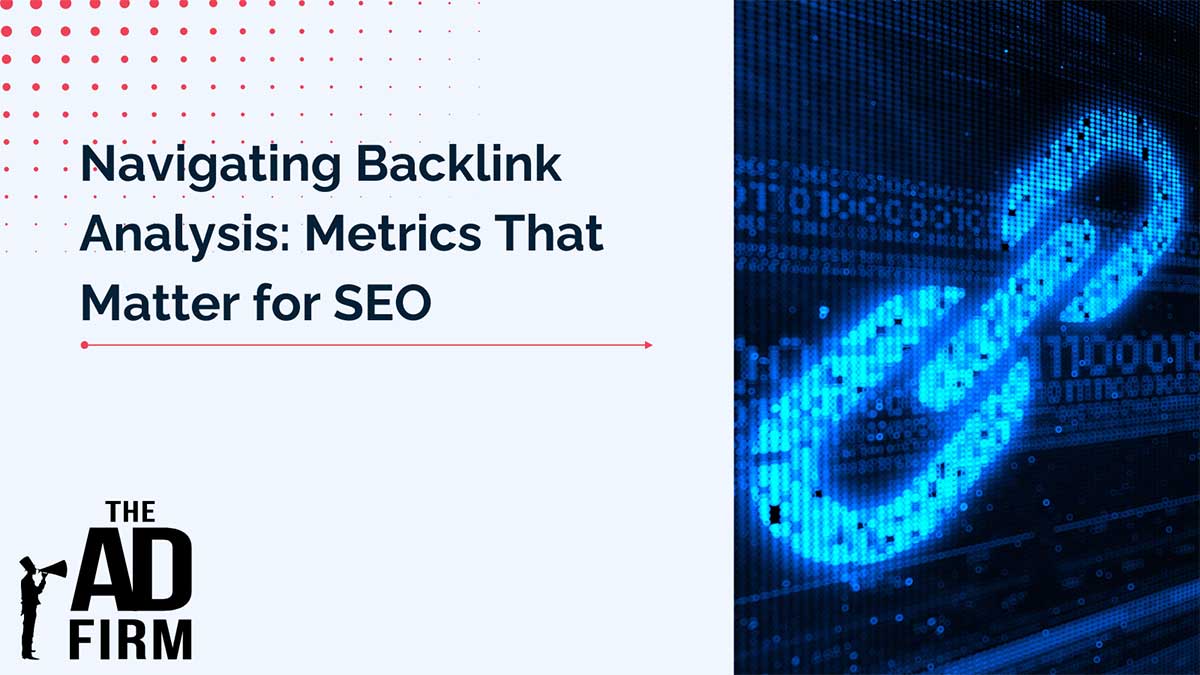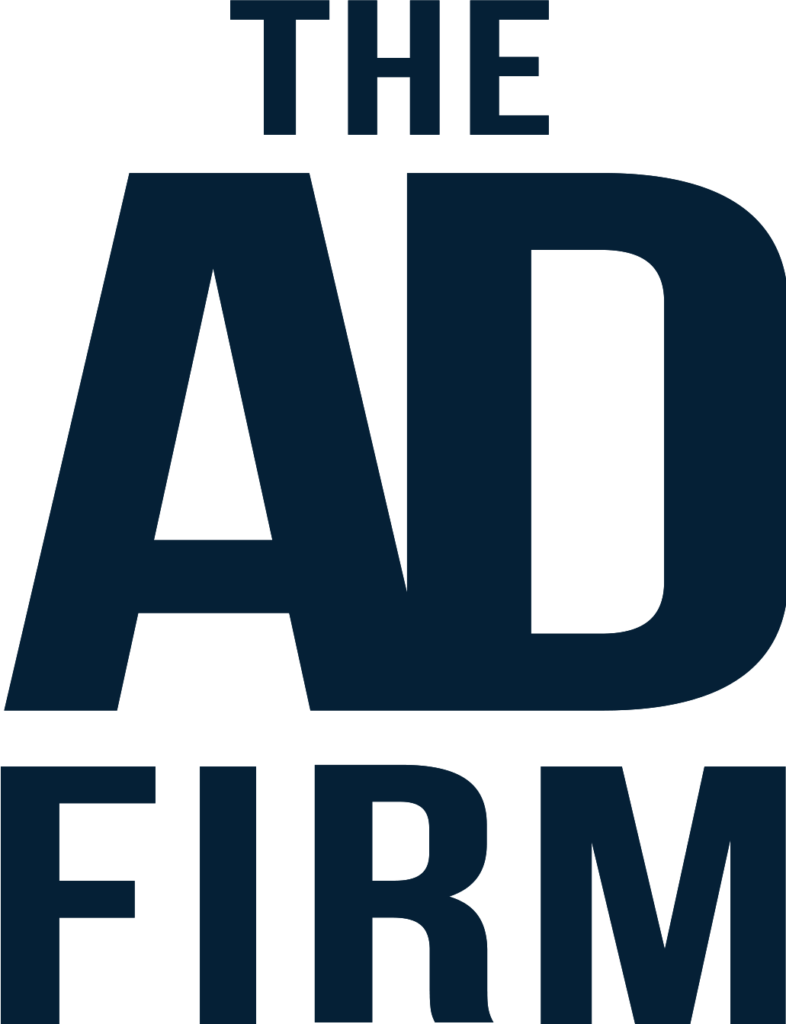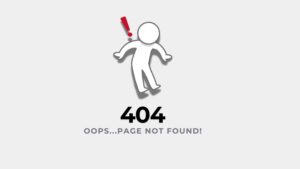The most effective link-builders monitor these top metrics to look for when building backlinks.
Backlinking remains as a pillar of search engine optimization (SEO) as it directly impacts your traffic, site credibility, and, ultimately, your search engine rankings. It entails acquiring links from other websites as these are “votes of confidence” for your website.
But while the game has long been about quantity, developments in search engine algorithms have switched things up. Today, the challenge for marketers is to balance quantity with quality. Otherwise, gaining backlinks might just end up hurting your chances of ranking.
To achieve the perfect balance between both, it’s important to understand how search engines deem a link as “high-quality” instead of bad.
Understanding Backlink Quality
Not all backlinks will help improve your search rankings. In fact, a lot of them may be pulling it down because they’re not of the quality that signal authoritativeness. They can even be spammy ones.
Essentially, there is nothing wrong with focusing on quantity. However, you have to be prudent about two things: 1) selecting the links you acquire and disavow, and; 2) the quality of backlinks you decide to acquire.
Ideally, you would want an adequate amount of good-quality links to benefit your websites and avoid spammy ones that might earn you penalties. Google’s algorithm will always prioritize websites that are authoritative, trustworthy, and relevant in this regard. Acquire links from sites like these, and the rewards are:
- Improvements in visibility, traffic, and conversions. Statistically speaking, sites with high-quality links enjoy higher rankings, leading to more visibility, traffic, and conversions.
- Boost in website credibility and authority. High-quality backlinks indicate your site’s credibility and authority within your niche.
- More relevant and quality leads. Links are the online equivalent of referrals. Hence, if a credible website links to you, it signals to their visitors that they can trust you too.
Read Also: The Three Pillars of SEO: Authority, Relevance, and Experience
To get these good links, you must first learn how to distinguish them from the bad. That’s where your metrics come in.
Top Metrics for Assessing Backlink Quality
Effective link-building practices entail prioritizing high-quality links for digital PR and outreach efforts. If you’re going through the trouble of hunting for an email address to send outreach emails to anyway, it’s best to make sure the link has value.
Here are the metrics you need to watch out for in that case:
1. Domain Authority (DA) and Page Authority (PA)
Domain Authority (DA) and Page Authority (PA) estimate a website’s or a specific page’s potential ranking ability on search engines. Developed by Moz, these metrics give you insights into the strength and quality of a website’s backlinks.

Looking at these metrics is critical as they signal the value of a website. As you can see, the top-most result for the search ‘sustainable link-building practices’ has a DA score of 89. It’s lower compared to Fast Company’s DA, but notice how Search Engine Journal’s page has a PA of 51. So it’s important to balance your assessment.
What Does Domain Authority Signal?
Domain Authority scores ranging from 1 to 100 predict how well a website will rank on search engine result pages.
A higher DA indicates a greater likelihood of ranking. While a DA score of 50 or above is generally considered good, scores of 60 to 70 are considered very good, and scores above 80 are excellent. However, it’s important to note that DA is best used as a comparative metric rather than an absolute one.
Websites with a high DA are considered more authoritative and trustworthy, making backlinks from these sites more valuable. Hence, earning a link from a site with a high DA can significantly enhance your site’s SEO performance.
What Does Page Authority Signal?
Page Authority is similar to DA but applies to individual pages rather than entire websites. It predicts a page’s ranking ability from a score ranging between 1 and 100. Similarly, higher scores mean better chances of ranking higher on SERPs.
Like DA, a PA score of 50 or above is considered good, with higher scores reflecting a page’s more robust ability to rank in SERPs. The same principle applies to using PA as a comparative metric.
A high PA score means that a particular page has a good potential to rank well, which makes backlinks from such pages particularly valuable. This is especially true if the page content is highly relevant to your niche.
Below are some tools you can use to assess these scores:
- Mozbar
- SEMrush
- Ahrefs
2. Relevance of the Linking Site
While high DA and PA scores are signal performance, they don’t always tell the whole story about relevance.
High DA and PA are good markers for the strength of backlinks. However, if you acquire links from pages that don’t align with yours in terms of topic or intent, then it’s useless. Remember: Google also checks for relevance. Hence, if you have a blog about how to maximize your PPC ad budget, then links from sites or pages talking about anything but are not going to benefit you.
With that, relevance often outweighs DA/PA scores in terms of SEO impact. Going back to the example earlier, a website with a DA/PA score that’s around 50-60 but is relevant to your page’s topic and intent might serve you better.
Search engines have grown more adept at understanding the context and relevance of links. This relevance signals to search engines that your content is valuable to readers within your niche. Hence, it could potentially boost your rankings for targeted keywords and improve your site’s overall SEO profile.
Tips for Determining the Relevance of Niche Websites for Backlinks
- Analyze content themes. Look at the general content of the potential linking site. Does it share a common theme or audience with your site? A shared focus can indicate a relevant and valuable backlink source.
- Check audience engagement. Sites with active, engaged communities in your niche may offer more than just a backlink—they can drive targeted traffic to yours.
- Evaluate the content of the linking page. Beyond the site itself, consider the specific page your backlink would come from. Is the content of the page closely related to yours? Does it help enrich your content, or will the site’s readers just end up confused when they land on your page?
- Assess competitor backlinks. Investigating where your direct competitors acquire their backlinks can provide insights into which niche sites are considered authoritative and relevant by your industry peers.
To reiterate, while securing backlinks from high DA/PA sites can be beneficial, the relevance of the linking site to your specific niche is paramount. A strategically acquired backlink from a closely related, authoritative niche doesn’t just boost your traffic. Ultimately, it also props up your credibility in your niche.
3. Traffic Volume of the Linking Site
Traffic volume is another important signal of link quality. Higher traffic volume indicates that they have an engaged audience. The main idea of checking for traffic volume is because it gives you some insight into how much traffic can trickle down to your website from the linking site.
After you check for relevance and the DA/PA scores, check for the traffic volume to see if the linking site has a decent amount of visitors. Choosing the most balanced one in terms of those metrics and traffic volume offers you:
- Referral traffic improvements. A backlink from a high-traffic site increases the likelihood of a significant volume of visitors clicking through to your website.
- Greater brand exposure. The presence of your link in another website’s pages is already a count to exposure. This visibility grants you more chances to further attract other backlinks and brand recognition.
- Implied trust and authority. A backlink from a high-traffic site is a vote of confidence in your content. This suggests to search engines and audiences alike that you are a credible and valuable source of information.
4. Link Placement and Context
Placement and the context of a link must also signal relevance. If a string of text around your link does not make sense, then it’s likely a spammy link.
Ideally, a link should look like it’s naturally placed into the text with the goal of enriching a discussion. It should not be jarring or disjointed from the rest of the text. Here are specific considerations when assessing link quality in terms of placement and context:
- In-content links are more valuable. Links placed within the main body of an article or webpage are more valuable because they are more relevant to the content, more visible to readers, and, therefore, more likely to be clicked on.
- Surrounding text provides search engines with context clues. The text prior to and after your backlink should give crawlers contextual clues about the nature of the linked content. A link naturally integrated into content and surrounded by relevant keywords and topics will be seen as more authoritative and beneficial.
- Users can easily engage with the link. Backlinks that are easily discoverable and relevant to the content are more likely to engage users and encourage click-throughs. This will help drive traffic to your site and signal relevance to the topic and your niche.
5. Follow vs. NoFollow Links
Follow and nofollow directly influence how search engine crawlers interpret and value the backlinks to your website. These designations tell search engines whether to consider a link as a “vote” in favor of the linked content’s quality and relevance or not.
Here’s how the two differ:
- Follow links, also known as “dofollow” links, are the default state of a hyperlink unless specifically marked otherwise. These links allow search engine crawlers to follow them from one site to another, passing on what’s known as “link equity” or “link juice.”
This equity is a factor in the search ranking algorithm, indicating the linked content’s value and authority. Follow links are endorsements, telling search engines that the linked-to content is high quality and relevant.
- Nofollow links, on the other hand, are the opposite. These links include a rel= “nofollow” attribute within the hyperlink code, which instructs search engines not to follow the link or pass on link equity.
The primary purpose of this is to combat spam and manipulative link-building practices by allowing web admins to link to external content without endorsing it for SEO purposes. Nofollow links are commonly used in comments, forums, paid links, or any content where a publisher does not want to directly vouch for the linked page’s authority.
But while they don’t pass on link equity, nofollow links still help diversify your link profile. Additionally, these can still drive traffic to your site, increase exposure, and indirectly benefit SEO by contributing to a natural-looking backlink profile.
Final Thoughts
Balancing your efforts between increasing the quantity of your backlinks with acquiring high-quality links is critical for link-building efforts to bear fruit. A thousand spammy links cannot hope to provide the value that one, high-quality link offers you.
More than improving your rankings, link-building serves a more important, overarching purpose. That is to boost your brand visibility and credibility among your industry parallels and with your audience alike. When conducting your digital PR and link-building efforts, strive to broaden your backlink profile by targeting high-quality and moderate-quality links.
This way, you can ensure that your link-building efforts are sustainable and provide you the most value.
To that end, we at The Ad Firm can help you get the proper footing with a link-building strategy that balances quality and quantity.









